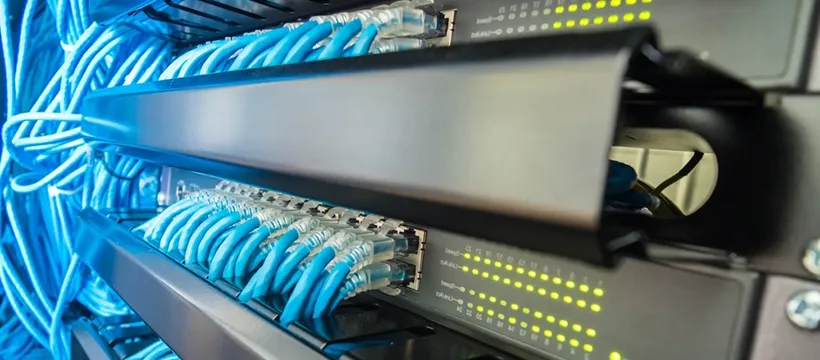What Is Network Optimization? – 5 Techniques and Solutions
Entuity Software
The importance of network performance cannot be overemphasized. A reliable, efficient network can reduce the stress of your day-to-day duties, help you focus more on strategic IT initiatives with your team, and avoid those 2 a.m. network failure calls that could ruin your week (or year). By monitoring your network and implementing the right solutions, you can keep your business running smoothly and avoid costly network downtime.
Jump-to Section
What Is Network Optimization?Network Optimization Metrics & KPIs
5 Network Optimization Techniques and Best Practices
2 Popular Network Optimization Solutions
Network performance optimization is a matter of measuring performance and making the necessary changes to remove bottlenecks and find areas of potential improvement. By combining a data driven approach to analysis with iterative performance tuning, your network can be a competitive advantage to your business.
However, another important aspect of network optimization is the inherent “optimization” aspect. Optimizing your network does not mean building an overpowered solution that can withstand any disaster known (or unknown) to man. Optimizing an enterprise network means striking a healthy balance between performance and cost. If you under-build your network systems, your life, and the life of your team, will be miserable. If you over-build your network systems, you’ve likely wasted money and gone over budget.
When selecting a network monitoring tool, your reputation is on the line – how do you know you’re making the right choice? Download our evaluation guide about How to Choose a Network Monitoring Tool Today!
To reach the goal of network performance optimization, however, it is important to understand how to analyze your network, what things play a role in network performance, and the best practices to optimize networks both now and in the future. Understanding how to optimize your network can be straightforward and simple to implement once you have foundational knowledge about how to improve network performance.
What Is Network Optimization?
Network optimization is the iterative process of improving the performance, reliability, and resilience of your IT network. Different network optimization techniques, tools, and architectures can be leveraged to optimize performance within the bounds determined by your organization’s IT resources.
As a network administrator, you understand that your goal isn’t merely to avoid “downtime,” but to deliver an efficient experience for users. Given your physical infrastructure, and the budget your business has allotted for your network operations, you need to find the ideal balance of performance and expenditure.
Network Optimization Metrics & KPIs
Although network traffic optimization is often viewed as a complex and daunting task, the main goal is actually very simple: to improve network performance. While there are many ways to achieve this, the most important factor is which metrics you track.
Packet Loss
Packet loss is one of the most important metrics for network optimization. Loss can degrade network performance in many ways. This will result in slower response times, reduced bandwidth, and increased latency.
There are several factors that can cause packet loss, including hardware failure, software issues, and congestion. To optimize your network, you need to identify the source of the packet loss and take steps to mitigate it. Common resolutions include hardware refreshes or upgrades, expanding available bandwidth, and QoS prioritization. Fortunately for network admins like yourself, network fault management software platforms can help you pinpoint precise hardware failures that may be causing packet loss within your network.
Latency
Latency is another important metric for network optimization. It measures the time it takes for a packet to travel from its source to its destination. Latency can be affected by many factors, including network, storage, or server hardware failures, software faults, and sub-optimal networking configuration.

High latency can lead to issues including dropped connections, choppy audio and video, and delayed response times. To reduce latency, you need to identify the source of the issue and take steps to mitigate it. If hardware failures are behind your latency issues, network topology mapping software can help you pinpoint the device-level geographic location of your culprit.
Bandwidth
Bandwidth is another important metric for network traffic optimization. It measures the amount of data that can be transferred between two points in a period of time. Bandwidth can be affected by hardware, software, and networking configuration.
High bandwidth can lead to issues like increased latency, dropped connections, and poor audio and video quality over your network. To reduce bandwidth utilization, you need to identify the source of the issue and take steps to mitigate it. Common causes of enterprise bandwidth strain include malware, sporadic application updates, and even content streaming/social media applications that are resource-heavy but not business-critical.
Availability
Availability is the final metric for network traffic optimization. It measures the uptime of your network, or the amount of time that it is available for use. Network and service availability and uptime can be affected by several factors, including software, hardware, and the configuration of your network.
It’s important for your workforce and any external end users to have uninterrupted access to the resources and applications they need. To realize high availability, you must identify the source of your outage and put redundancies or prioritizations in place to maintain uptime.
5 Network Optimization Techniques and Best Practices
Perhaps the most important benefit of optimizing your network is avoiding costly downtime, which is estimated to burn $5,600 per minute.
Different techniques can be used to optimize a network. Some of the most popular include:
1. Load Balancing
This technique helps distribute traffic evenly across a network, which can help prevent congestion and ensure optimal performance. This ensures that no one server is overutilized during high traffic periods and is instead smoothed among your broader server pool.
2. QoS Prioritization
QoS prioritization allows you to prioritize certain types of packets sent across your network. This includes prioritizing mission-critical packets like video conferencing VoIP packets over server backups that don’t need to happen in real-time. This can help ensure that critical data is always transferred smoothly and efficiently.
3. Payload Compression
Payload compression reduces the size of data packets, which can help improve bandwidth and avoid congestion.
4. Leveraging an SD-WAN
Software-defined wide area networks (SD-WANs) can help improve network performance by dynamically routing traffic. SD-WAN leverages a virtualized, centralized control function to direct your network traffic across a wide area network. This eliminates the need to backhaul data to a central source if your organization has multiple campuses.

5. Improved Hardware
In some cases, simply upgrading your network hardware can be enough to improve performance. If an old switch or router is causing frequent bottlenecks within your network, an upgrade could be all it takes to restore order.
Two Popular Network Optimization Solutions
Why haven’t you already optimized your network? The reason is simple: In today’s economic atmosphere, your IT team is likely suffering from having the wrong tools, or not having the wrong people (or too few of the right people). Resources are not limitless, and tools don’t always fit your business needs.
Your IT team is exhausted – when are you finally justified in introducing network monitoring software into your IT operations? Download our white paper about the 7 Most Common Network Monitoring Use Cases today
Luckily, there are several types of solutions that can help your team with network optimization. This includes network optimization tools that empower you to in-house your optimization efforts, and network optimization managed services that do the heavy lifting for you.
Network Performance Monitoring Software
Network performance monitoring software is a type of software that helps you track the performance of your network. This type of software enables you to optimize your enterprise network across devices supplied by a host of different vendors.
Enterprise network monitoring software can automate network device discovery and provide intuitive workflows that make it easy to identify when faults arise. Responsive dashboards let you quickly assess your network health or drill down to the device level to quickly and fix network problems.

Entuity Software™ supports network infrastructure monitoring for thousands of devices out of the box across hundreds of vendors. And, Entuity has been consistently recognized as leader in the Network Monitoring & Management category by G2.
Network Management as a Service
Network management as a service (NMaaS) provides managed engineer assistance for optimizing your network. Network management services can help you with a variety of tasks, including monitoring performance, identifying issues, and implementing solutions.
NMaaS providers can help streamline your network management processes by taking care of hybrid environments, supporting new networking technologies, and ensuring outstanding end-user experiences. Some of the best network infrastructure management providers, like ParkView Managed Services™, are backed by an Enterprise Operations Center (EOC) that ensures a smooth deployment with a tailored onboarding plan that includes custom set-ups for network device management, custom dashboards and reports that cater to your organizational goals.
Choosing the Right Way to Optimize Network Performance
There are many different options available for network optimization. The right solution for you will depend on your specific needs.
If you’re looking for a solution that will enable your networking team to monitor your own network, then network performance monitoring software may be a good option. If you’re interested in having an expert team optimize your network so you can focus on more strategic initiatives, then network management as a service may be a better choice.
As the leading Global Data Center and Networking Optimization Firm, Park Place Technologies can help your team with nearly any networking hurdle you encounter. Contact us today to learn how Entuity™ Software and ParkView Managed Services™ can support your team!



